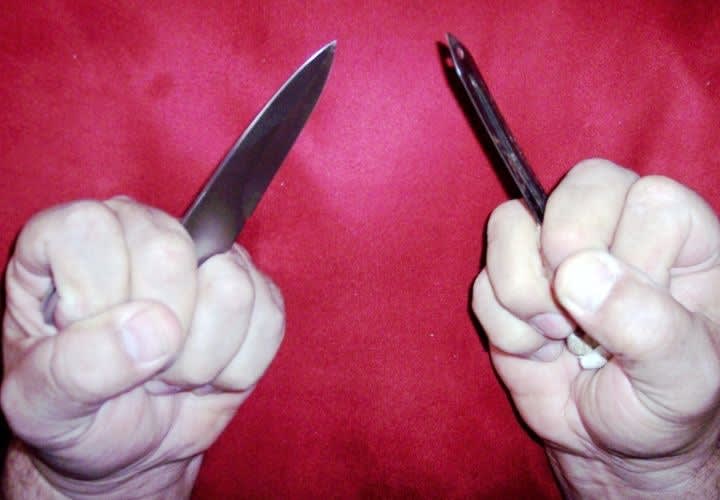The hard spring steel material of the shank can be used to cut softer iron, aluminum and other metals to make larger, longer "bone crusher" stabbing weapons. Every metal chair, bunk, window frame, table and chain-link fence is a potential edged weapon.
The jails and prisons are controlled by gangs such as the Mexican Mafia, Nuestra Familia, Aryan Brotherhood and Black Guerrilla Family, whose members diagram the human anatomy to accurately target the most lethal parts of their victims. They've been videotaped in jails and prison yards practicing and rehearsing edged-weapon attacks.
After just a couple of years in this gladiator school, most hardcore gangsters have witnessed and participated in several edged-weapon attacks. This means unless you have experience in bladed combat, the gang members are more proficient than you are in a knife fight. Like a gunfight, you won't want to take second place.
Jail and prison hits are often perpetrated by multiple attackers. A three man team is most common; the designated "hit man," the secondary "lay off" man and the "eye," or lookout.
The inmate manufactured weapons are commonly hidden in the "keester" or rectum to escape detection from prison guards during searches. The weapons are purposely left dirty to cause infections in the wounds inflicted during the attack. Sometimes the blades are swabbed with blood infected with HIV or hepatitis. Inmates don't abide by the rules of the Geneva Convention in jails and prisons.












